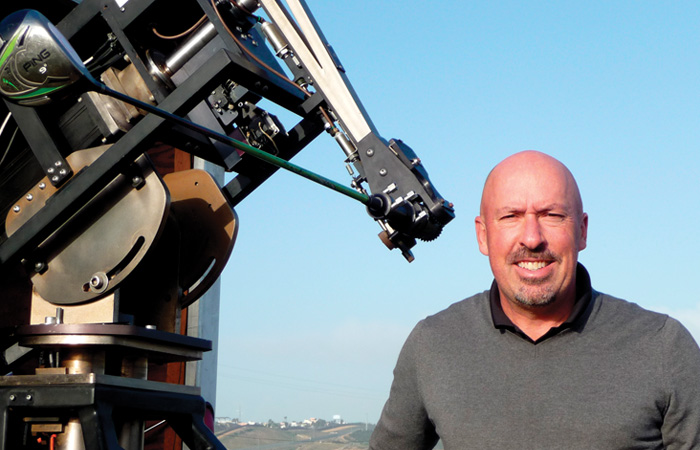The PGA TOUR makes its West Coast Swing at the start of each year. That makes for a great opportunity for fans in Hawaii and California to watch all their favorite players in action and, in fact, to learn more about the TOUR itself.
Given that this is a golf science column, it seemed appropriate to discover the numbers behind what the TOUR does, including how local charities are able to benefit from the events that are conducted in each location that the TOUR visits.
The PGA TOUR, in 2022, had a revenue of almost $1.9 bilion or, more precisely, $1,897,747,134 (according to https://projects.propublica.org/nonprofits/organizations/520999206). The main source of income is “media rights,” which, in 2023, was $763 million. “Tournament income” comes primarily from title sponsorship income, while ticket sales, hospitality and pro-am entry fees are “small change” in comparison. In 2023, this source of revenue provided $425 million (according to a Golf Monthly article by Roderick Easdale, Dec. 23, 2023). It is mainly this sponsorship money that covers each tournament’s total purse and individual prize monies.
It turns out that the PGA TOUR manages the “inside the ropes” aspects, while it is the local charities benefiting from the TOUR’s stops across the country that actually manage the individual tournaments. They raise and disperse the monies received (realclearmarkets.com, Ricky Clemons, Dec. 2021) and are the “tournament operations managers” of each impressive event the fans attend!
So, it seemed important to better understand which local non-profit was involved with the recent Farmers’ Insurance Open (FIO) at Torrey Pines, near San Diego, California.
Who better to find out from than Marty Gorsich, the CEO of the Century Club of San Diego (CCSD – centuryclubsd.org), the host organization of the FIO. “Our mission in hosting the Farmers Insurance Open event is to drive civic and community impact, and the community impact is really though our support of primarily at-risk youth charities,” ‘Gorsich said. Underserved youth, in this case, can refer even to young adults, while the organization’s reach even spreads out to those experiencing homelessness or being involved with the military.

For a long time their focus was on just providing the funds, but as they got closer to the charities they served, the folks at CCSD realized it was far more important to help through all three of “time, treasure and talent” – a much-used expression in the charity world. Not just through financial giving (“treasure”) alone. “Money doesn’t fix everything,” added Gorsich. Volunteer hours are needed. Or talents like graphic designers, lawyers to write contracts and by-laws, CFO accountants who can explain sound business practices, are all very valuable, too.
Accordingly, they shifted the program a few years ago to primarily focus on five charities whom they “teach to fish.” After some years of capacity building, in the fifth year the five charities mentor new, incoming charities, then graduate with a financial gift. Additionally, during 2021-22, the Century Club made charitable donations to 14 charities, to the tune of over $1.3 million (according, once again, to a ProPublica report, Schedule I).
The Champions for Youth program is the one through which the CCSD non-profit is able to help other non-profits serve the youth of San Diego County. Currently the charities being aided between them serve youth in foster care, those transitioning from foster care, those with emotional and behavioral challenges, those who are first-generation college-goers, those who are abused or homeless, those who are junior active duty enlisted youth, and those who need help with reading. That is a great deal of involvement for any one charity to be connected with.
Moreover, the CCSD’s civic impact, as Gorsich referred to it, is enormous, too. Through the national and international spotlight on the FIO event via broadcast and other media coverage, the economic impact to San Diego County is $67.5 million. Moreover, CCSD has used golf as a tool to create the programs that it has, which include introducing golf-related careers to many young people in the community, and donating FIO tickets for local non-profits and schools to auction for their own fundraising.
The Century Club of San Diego has a membership of about 100 community leaders who not only give generously of their time and talent but, like other clubs, pay “social dues” so that their own club meeting expenses do not take away from any monies raised.
Additionally, the Century Club has a staff of 12, and the FIO event has around 1100 volunteers to help with every possible aspect of the event and they, too, are managed by CCSD. In other words, a local charity puts in a lot of work into the event it makes the bulk of its annual revenue from.
Jennifer Cota, Executive VP Communications and Community Affairs at CCSD, summed up the essence of both the CCSD and the FIO perfectly, “The PGA TOUR’s Farmers Insurance Open is the Century Club’s platform to give back to San Diego. It offers a myriad of opportunities do so – whether that is through our support of our Champions for Youth nonprofit partners, hosting field trips during the tournament to expose local youth to different career opportunities, or as a means to showcase San Diego to the world with the international and national broadcast. It may be just a four-day event, but its impact can be felt throughout the year,” Cota said.

So, the next time you watch a PGA TOUR event or that of any of its subsidiary tours on television or attend a local TOUR event, know that many local charities are benefiting from your participation, while they make it possible for you to follow a sport and players that you love.